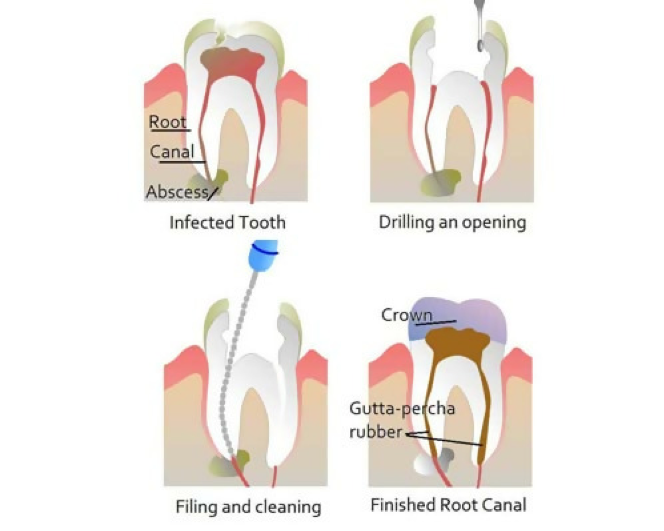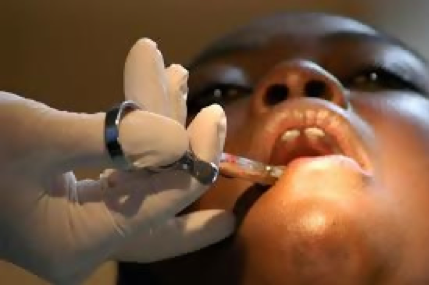Do you have a failed root canal? If you recently have undergone a root canal treatment, how do you know that it has been successful?
Know that successful treatment is usually not painful. Some patients take some time to completely overcome the pain as dentists use instruments and aggravate the tissues around. A successful root canal does not have tenderness symptoms, and there is no increased mobility. A healing tooth does not have draining sinus with healthy ligament surrounding the treated tooth.
In short, the tooth appears and functions normally. In addition, if toothy radiography or X-ray shows that a dark area on the root of the treated tooth has reduced, it is a sign that your tooth is healing.

However, if all these signs are missing, you might have a failed root canal. There are chances that all root canal symptoms will begin again, which may happen any time after the treatment is completed. The symptoms may vary from gum swelling, tenderness to pain to increased tooth mobility. Severe cases may show the presence of toxic sinus pus in the root of the tooth. The X-ray of the infection area remained unchanged or even developed at some new site.
A failed root canal may also lead to several other issues, such tooth decay and the development of anaerobic bacteria.
So what should you do if you have failed the root canal?
If you are considering having a root canal, it is important to know the risk associated with endodontic treatment.
Causes of Failed Root Canal
Placement of permanent restoration or crowns on the infected tooth after the root canal treatment, regular dental check-ups, and impeccable hygiene are some of the great ways to maintain tooth restoration.
However, other factors may lead to severe tooth failure. It is worth noticing that the tooth canal system of a tooth is complex and may have high risk of being re-infected, especially if restoration of the tooth has leaked or patient fails to maintain proper oral hygiene. Sometimes the sealing material of tooth breaks down or degrades over time.
Moreover, if the patient does not follow proper dental care regime, he/she may develop gum disease o cavities on the treated tooth just like any other tooth in the mouth. Consulting your dentists and following dental hygiene are the keys to keeping the risk factor of failed root canal treatment at bay.
Another important thing that many people have little knowledge of is variation in root canal anatomy. Tooth’s canal comprises two canals called an accessory canal and a lateral canal. Radiography cannot help identify or observe the division of these canals. That what makes it difficult for the dentists to detect, clean, shape, fill, or treat the canals adequately. In such cases, one of these canals is left ineffectually cleaned or treated that provides bacteria a place to thrive and persist. This ultimately leads to root canal failure.
Sometimes the tooth is completely dead and does not receive nerve, blood, and lymphatic supply. That means there is no immune response to defend against potential oral problems. This, unfortunately, becomes an ideal condition for the anaerobic bacteria. These bacteria require oxygen-depleted environments to thrive and produce powerful toxins that can exacerbate the treated tooth.
Many studies have demonstrated that extracted root-canal treated tooth has pathogenic microbes. These microbes are often difficult to disinfect.
Symptoms of Root Canal Failure
As mentioned earlier, there can be several reasons of failed root canal treatment. The symptoms of root canal failure are not much different from an original damaged tooth that needs treatment. Here are a few of them.
· Sensitivity to Tapping and Pressure
Having persistent and discomfort after root canal therapy is one of the conspicuous signs. This discomfort can be outright pain and slight tenderness and often feels when closing or biting teeth, tapping, or applying pressure on the tooth. Experts also refer to this symptom as percussion.
· Swelling
Swelling is one of the common causes of a failed endodontic that many cases show. Swelling can be extensive and spread to a patient’s neck and face.
· Variants
In some severe cases of failed tooth canal therapy, a vent forms that drains pus and toxins from the infection. The lesion is sinus tract and becomes a persistent gum infection. Tooth discoloration and pimple on jaw are some more symptoms of failed root canal.
Failed Root Canal: What is the Solution?
As all medical treatments have chances of failure, root canal therapy has also a slight percentage of failure caused by a number of reasons. However, it is vital to recognize the symptoms and signs to understand and choose the right option of treatment. Seeking the help of a qualified and competent endodontist is the only way you can prevent further damage to your root-canal treated tooth. Only a professional dentist who specializes in endodontic treatment can help you when your root canal therapy goes wrong.

Dr. Young Bui, in this regard, is one of the renowned names in Manhattan who has performed over 15,000 root canal therapies. The qualified dentist suggests another endodontic treatment to the patients with the symptoms of failed root canal therapies.
Root canal retreatment is an effective solution to save the tooth, decrease pain, and prevent the tooth infection from deteriorating and spreading. Generally, Dr. Bui at Bryant Park Endodontics reopens the tooth and removes canal filling. He meticulously cleans the canal and assesses the inside area of tooth to ensure all narrow canals are cleaned. Finally, he refills and seals the canals with a temporary filling.
If you are struggling with the same dental issue and looking for reliable dental services to get rid of failed root canal treatment, call us at 646-205-3045 or visit our website at https://youngbuidds.com/ to find out the solution to your problems.

[…] I Have A Failed Root Canal. What Do I Do? […]